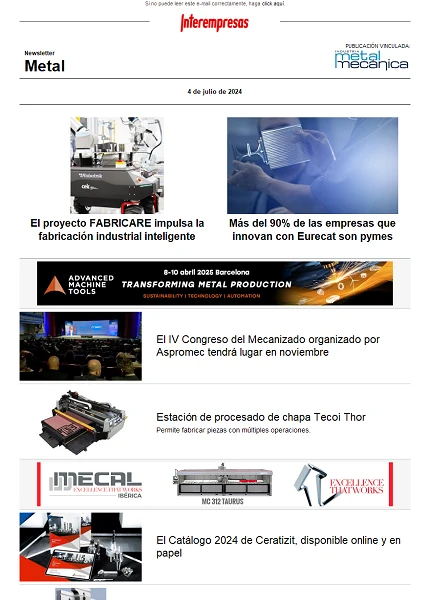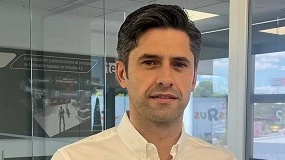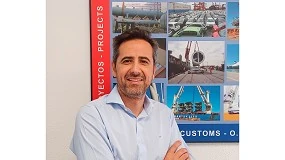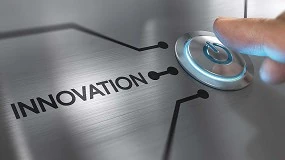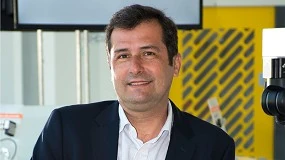Reverse logistics, a new cost to be considered for companies operating in the European Union
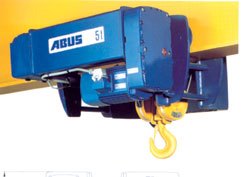
Thus it introduces a new concept to manage companies and marketing their products in the European Union (EU); This new concept is called reverse logistics (Reverse Logistic).
Therefore, there is a risky and necessary challenge related to the consolidation of orderly and transparent markets of raw secondary, from consumer products at the end of its useful life that requires the commitment of companies operating in the EUthat is, the internalization of the management costs associated with the waste products reverse logistics.
PricewaterhouseCoopers, leader in reverse logistics-related business advising, has own to advise in all processes approach and methodology: from quantification and classification of the waste generated by a consumer product, to the collection and transportation to the management and treatment facilities. The company provides information about new business processes to meet the growing demand for the new market of secondary raw and, at the same time, ensures that companies comply with the recycling and recovery targets established by law.
The signature is addressing the design and development of this new concept of reverse logistics, projects for clients such as Ecovidrio Ecoembalajes, Cicloplast, Sernauto, Anfac, Cofaco and Aveq.
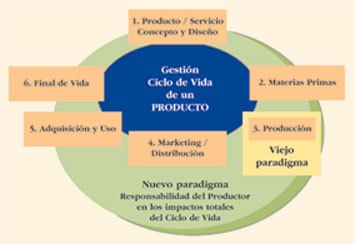
1. Context of starting and regulatory framework
At the same time, European guidelines by waste category determine the need to ensure the proper management of the different waste, setting quantitative targets for recycling and recovery.
Between these regulations, which provides innovative patterns of responsibility in the fulfilment of targets for recycling and recovery, is identified specifically:
- The directive on packaging and packaging waste (E+RE), and transpose to each of the Member States of the EU, with targets to be achieved by 2001. These objectives are currently in review period with new values for 2006;
- The directive of vehicles out of use (OUV), which includes the spare parts and components of the car; directive in phase of transposition to every European country;
- The waste directive of equipment Eléctricos-Electrónicos - line Brown (REEE), with special attention to the batteries and batteries that come with these teams;
- With the rules for the waste's equipment Electrodomésticos-Línea Blanca (REE);
- The specific legislation for waste from construction and demolition (RCD); and
- With the rules to ensure the proper treatment of the packaging of plant protection products, as well as with the rules relating to the management of plastics greenhouse in Spain, among others.
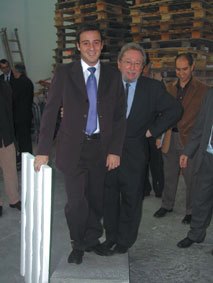
Implementation of these measures and compliance with them must be assumed by the producer, economic agent that initiates the process of marketing a product, as well as organisation, planning, implementation and awareness-raising, costs associated with these new business processes.
How does it affect companies this new requirement and how should respond to the new European guidelines laying down ambitious quantitative objectives to be reached by them, in individual or collective, way as a sector, in a specific time period, with unknown management costs?
The directive on packaging and packaging waste, adopted on 20 December 1994, marked an important milestone on how bottling companies have been affected by the new requirement on the management of packaging waste, that for the first time it is revealed the requirement that the companies are those who commit themselves to pay an amount for packaging material with which to ensure the recovery and recycling of these containers, in such a way that each European country meets some specific objectives for recycling and energy recovery for each material of packaging in 2001. After this period, being analysed the objectives achieved and thereby to complete a new requirement in another period of 5 years; Thus the EU is currently reviewing objectives to 2006.
The implementation of this directive of containers in each country of the EU initiates a new process in which consumer products companies, organized individually or collectively, must ensure the best treatment for packaging wastein response to the selection of the best alternative of technical, economic and environmentally viable management.
This new regulatory framework for packaging is serving as a model to work in the development of the new guidelines for family of product out of use (PFU) and trends on the alternatives of the remaining families of consumer product waste, the electrical and electronic equipment; appliances equipment; vehicles; the parts and components of the vehicle; the materials of construction and demolition; mainly. This is intended to ensure compliance with the basic principle of "polluter pays".
Certainly, this new scenario based on compliance with the above principle is assuming a great effort for companies, on the understanding of the guidelines to comply with both the assumption of the costs associated with the proper management of the product out of use (PFU)that they should be referred to even in the phase of conception and design of the same.
In view of this new scenario of liability for companies, they are opting for organizing systems specifically designed to ensure the fulfilment of the objectives laid down by law; in the case of the management of packaging waste, with the rules posed by the Organization of non-profit entities, these are the so-called integrated systems management (GIS).
It is worth noting the recent development at European level of the integrated policy of product (IPP) will be considered variable so far not considered. These new tools is intended to help countries of the EU to achieve the objectives set by the directives (containers, vehicles, eléctricos-electrónicos components, etc.). It is basically take into account the prior stages of conception and design of the product, prior to its marketing, according to the valuation of environmental impacts throughout the product life cycle.
In this sense, AENOR is working on a standard of reference on eco-design of products that continues and extends the guidelines of the ISO 14001 standard on environmental management.
Waste management systems
Bottling companies adhering to the GIS identify their packaging with the Green point symbol; This green dot has a specific economic value for each packaging material, amount managed by SIG to give the treatment appropriate to each package no longer in use that was placed on the national market by the adherent enterprises.
Thus, in the integrated system of management (GIS), each packer (company) pays to this organization that is responsible for managing their packaging.
In Spain, the GIS allowed for the autonomous communities for the management of household packaging are Ecovidrio and Ecoembalajes; for plant protection packaging is SIGFito and for the packaging of pharmaceutical products, SIGRe.
However, for those packing companies that don't want to join a SIG, with the related rules proposed the implementation of alternative systems, whereby each company assumes the responsibility for managing their own containers individuallyorganized in a storage system, refund and return (SDDR).
In this case, the proper treatment of packaging waste is ensured through the charging of a rate per container delivered to their customers, amount that returns it to return the used packaging, and is the company which should ensure the management optimized for their packaging.
Therefore, the system which is still commonly accepted among the bottling companies is GIS, through membership, if you are affected by law.
The producer chooses to participate in a SIG, because "win":
- He delegates responsibility to not-for-profit entity
- You don't have to worry about the logistics of return
- Get benefits, management costs are better suited
- You don't have to send their results to the public Adminsitraciones
- You can participate in the new market of materials
As well, contributions that companies adhering to the integrated management systems for each of the containers through the well-known Green point, must be sufficient to finance the difference in costs between the regular system of collectiontransport and urban solid waste treatment and management proposed by the GIS for packaging waste voluntarily attached to it, through the selective collection in specific containers for different packaging materials.
Other also effective mechanisms are the adoption of voluntary agreements at sectoral level prior to a possible imposed regulation that not takes into account the real needs that only the sector itself known. The proactive dialogue with the public administration represents the most promising way to achieve any result more realistic than an imposition laid down by law, such as the case of an eco-tax.
Management costs
However, raises a question this new scenario on the optimized management of waste, and is as follows, what is the cost to the management: collection, transport and treatment of waste products out of order to turn them into secondary raw through recycling or recovery?
In the definition of the costs associated with the management of a product of consumption no longer in use must take into account the value which has the residue in the market, i.e., if it counts as a positive value or as a negative value.
Front of waste whose management has a clear positive value, there is a wide range of waste management generates a cost. This difference between a type of waste and others, makes it necessary to analyse separately with a positive value waste and waste with negative value.
It is understood that a product out of order has positive value when the market price of the materials that we obtain as a result of reconstruction, the reuse, recycling or recovery is higher than the cost of the process to which it is subjected.
Given the current technological conditions, reaching positive market value some articles or high-value consumer products; In addition, as technology advances more pieces or parts of waste products will be acquiring value positive.
On the other hand, means that a product out of order has negative value when the market price of the materials that we obtain as a result of reconstruction, the reuse, recycling or recovery is less than the cost of that process that is submitted. In other words, all those parts that do not can be made in the market at an optimal price after this process.
It is clear that both if the value of the PFU has positive value as if it is negative, any system that is organized to manage this waste must ensure that total or partially all the necessary operations, i.e., selective waste collection and transport of waste to plants of selection and/or treatment centres made, or storage to be transported to the facilities of recycling and/or recovery.
At the same time, these organized systems must provide resources to carry out information campaigns civic and environmental awareness, in collaboration with public bodies, to determine the strategy to take in the geographical area concerned to enable final consumers to actively participate in the systems of selective collection organized for the purpose.
In addition, identified systems must assume the costs of the activities of the monitoring and control of the quantities recycled and/or valued to report to the regional, national and European public authorities who are aware of the progress made by the SIG that applicable in the considered country.
In this new context for companies with responsibility for the new regulations, PricewaterhouseCoopers has developed its own methodology for the determination of the costs associated with the management of waste from products at the end of its useful life.
This systematized methodology, systems or mechanisms developed to manage waste are in a position to objectively know what costs of collection and transport of waste materials, as well as the costs of treatment, according to the positive or negative value of the waste.
The end result is to determine the operating margin each stage management and logistics has been associated, according to some assumptions of work, whether they are technical, political, others, for the selection of the best from the technical, economic and environmental point of view.
This new regulatory framework, which has implications in each country, such as Spain, it is necessary to sort and organize data bases on the quantities of waste circulating on the considered geographical scope and know what percentage he is addressing a predictable management alternativesrecycling, energy recovery, other possible, managing to deflect the maximum amount of landfill waste, given that the dumping, even controlled, should be the least potenciable option.
Thus, all the economic agents involved in the full cycle of products, among which include also the recyclers and other management facilities, must be available to the public authorities and other organizations of management statistics on the annual management being doneto report to the European Union, with the aim of complying with the objectives laid down by law.
This situation is novel and so, we have a traditional business sector of recyclers. However, and due to the increasing demand for recycled materials, are becoming more employers are seeing an interesting option in the market of secondary materials, which are beginning to be companies incorporated with a modern, flexible and innovative approach, have no more interest than be seen as an agent, that Yes agent key in this process ensure the circuit of the waste, separated according to different categories of products of waste: packaging, automotive, eléctricos-electrónicos or other.
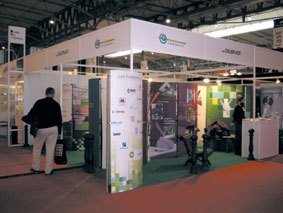
Secondary raw materials markets
in view of the management purely from the knowledge of the balance sheets of mass at each facility; without of course forgetting that each EU Member State should ensure compliance with recycling and recovery targets linked to quantities of waste selectively separated from the waste stream, by product family.
The new regulatory framework for packaging is serving as a model to work in the development of the new guidelines for family of product out of use (PFU) and trends on the alternatives of the remaining families of waste by consumer product
It is a new situation of transparency of business of recycling and other forms of management of the waste materials, which leads to a promising situation for banks management of materials and other products.
It begins to set up a new business with its market, the secondary matters, which must be built properly and applying the knowledge of the best available technologies, both in the processes of recycling, as in the compilation of data through the computer systems and the help of internet, and that this will help to meet the demands of the agents involved in the overall process, having regard to the principle of "shared responsibility":
- Public administrations, comply with EU regulations and generate new employment opportunities;
- Companies, reduce and limit the costs associated with the management of the products that sell, while contributing to the objectives of the Act and participate in new markets for secondary materials;
- Society, voluntarily participate in programs of selective collection and purchase new products of consumption with environmental badges.
Therefore, arises a risky challenge needed to consolidate an orderly and transparent market for secondary raw, on processes and threads that requires this new commitment to the employer, be taken into account the waste of their products reverse logistics.
It should be remembered that the mood reflected in the legislation relating to waste not only is avoid disposal in uncontrolled way, uncontrolled discharge points, but also understand that they are "renewable raw", and with their recovery and recycling are suitable as material, on this occasion, secondary lead to the creation of orderly markets, with defined criteria:
- Establishment of quality standards
- Transformation into a "commodity"
- Stabilization of the offer. Security of supply
- Price transparency
- Transparent market: supply and demand do not oligopolizada
- Extensive, continental, open markets
- MPS ordered, organized and guaranteed markets
In order to act accordingly with the opening and consolidation of an orderly market of secondary materials must meet all the stages of introduction of a product on the market, from the design and production to the stages of recovery and recycling of waste.
Thus, the company has to act from the design of a recyclable product that ensures proper management when it enters into disuse, with attention to:
- Design products as reusable as possible
- Anticipate the need for incorporation of technological improvements in the production process to minimize the associated pollutant loading
- Offer the possibility of other use after the use for which it was designed
- Planning the easy use of the materials
- Carefully planned use of materials restricted by the rules of implementation, among others.
Thus, targeted an additional requirement defined for the enterprise, as it is the case of the selection of materials for the production process, on the basis of meet criteria of recycling; the case of the procurement function organized in such a way that it will promote cooperation and the use of the exchange of waste; and even selection of productive processes that maximize the minimisation of the waste to avoid possible debris, taking into account throughout the value chain of a product, from the supply, through manufacture, to consumption and finally the management of the waste that is generated at the end of its useful life.






















